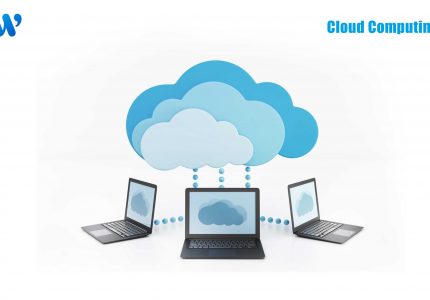Website Security – Is there anything more disturbing for a website owner than the possibility of getting all of your hard work altered or completely erased by a malicious hacker? We hear about data theft and cyberattacks all the time in the news. And you may be wondering why someone would go after my small company website. However, hackers do not just happen to the big players. According to one study, 43 per cent of all data breaches have happened to small businesses only.
Also, Read Hackers Stole Approximately $600 Million From the NFT Game.
10 Easy Guides to How to Secure Your Website
Here, we have listed 10 easy steps that you can do on your own without having much technical know-how.
1- Install Security Plugins For Your Websites
If you used a content management system (CMS) to develop your website, you can strengthen it with security plugins that actively prevent website hacking attempts. Each of the major CMS alternatives has security plugins, many of which are free. These alternatives address the security flaws inherent in each platform. This prevents various types of hacking attempts that might harm your website. Furthermore, all websites – whether CMS-managed or HTML pages – can benefit from SiteLock analysis. SiteLock goes beyond simply addressing site security gaps. It provides daily monitoring for everything from malware detection to vulnerability identification to active virus scanning and more. If your company relies on its website, SiteLock is an investment that should be considered.
2- Make Use of HTTPS
As a user, you may already be aware that whenever you input sensitive information to a website, you should look for the green lock image and HTTPS in your browser bar. Those five letters are important hacker security shorthand: they indicate that it is safe to transmit financial information on that specific webpage. An SSL certificate is important as it secures the flow of information between your website and the server, such as payment cards, personal data, and contact information. If you want people to trust your branding, you need to buy an SSL certificate. An SSL certificate is inexpensive, but the additional level of encryption it provides to your clients goes a long way toward making your website safer and more trustworthy.
3- Keep Your Software and Website Up-to-Date
Using a CMS with many useful plugins and extensions has many perks, but it also has risks. Vulnerabilities in a content management system’s customizable components are the leading cause of website infections. Because many of these tools are developed as open-source software, their source code is freely available — to both good-intentioned developers and serious hackers. Hackers can go through this code, looking for security flaws that will allow them to take control of your website by exploiting any platform or script faults. To keep your website safe from hackers, keep your content management system, plugins, apps, and any scripts you have installed up to date.
4- Ensure Password Security
It’s tempting to choose a password that you know you’ll always remember. As a result, the most often used password remains 123456. You need to do better — a lot better – to prevent login attempts from hackers and other attackers. Put forth the effort to create a properly safe password. Make it a lengthy one. Use more special characters, numbers, and letters. Also, avoid terms that anyone can guess easily, such as your birthday or your child’s name. If a hacker obtains other information about you, they will know to guess those first.
5- Make An Investment In Automated Backups
You still might face some risks even after you follow the things listed above. The worst-case scenario of a website hack is losing everything because you failed to back up your website. The best way to protect yourself is to keep a current backup on hand at all times. While a data breach is always frightening, recovering from one is a lot simpler when you have a recent backup. You may develop a practice of manually backing up your website on a daily or monthly basis. However, if there is even a small risk that you may forget, investing in automated backups will help. It is a low-cost approach to obtaining peace of mind.

6- Be Careful While Accepting File Uploads On Your Website
Anyone can misuse the option of uploading a file when you provide the upload file option. They may misuse by loading a malicious file, overwriting one of your website’s current files, or uploading a file so enormous that it brings your entire website down. Simply do not allow any file uploads through your website if possible. Many small company websites may get by without allowing file uploads at all. However, removing file uploads is not an option for all websites. Accountants and healthcare providers, for example, must provide a secure mechanism for users to send documentation. You can go for these steps-
1- Make a whitelist of allowed file extensions
2- Make use of file type verification
3- Set a file size limit
4- Check files for malware
5- Automatically rename files after upload
6- Keep the upload folder isolated from the webroot
7- Use Parametrised Queries
SQL injections are one of the most popular types of website hacks, with many sites falling victim to them. SQL injections can occur if you have a web form or URL parameter that allows external users to provide information. If you leave the field’s parameters too open, someone might inject code into them that gives them access to your database. Because of the quantity of sensitive client information that might be stored in your database, it is critical to safeguard your site from this. There are several measures you can take to safeguard your website against SQL injection attacks; one of the most essential and simplest is to use parameterized queries. Using parameterized queries guarantees that your code has enough particular parameters.
8- Make Use of CSP for Website Security
Cross-site scripting (XSS) attacks are another huge threat that site owners must be aware of. Hackers identify a means to insert malicious JavaScript code onto your sites, which can then infect the devices of any website user contacting with the code. Part of the war to secure your site against XSS attacks is comparable to the fight against SQL injections using parameterized queries. Make sure any code you use on your website for functions that allow input is as clear as possible in what is allowed, so nothing gets in. Using CSP involves providing the proper HTTP header to your webpage, which contains a string of directives that inform the browser which domains are acceptable and any exceptions to the rule.
9- Limit Your File Permissions and Directory
All websites are made up of a collection of files and directories kept on your web hosting account. Apart from storing all of the scripts and data required to make your website run, each of these files and folders is assigned a set of permissions that limit who may read, write, and execute any specific file or folder, based on the user or group to which it belongs.
10- Keep Your Error Messages Simple
Internally, detailed error messages can help you determine what is wrong so you know how to solve it. However, when such error messages are presented to outside visitors, they might reveal sensitive information that a potential hacker can use to identify your website’s weaknesses. Be extremely careful about what information you supply in an error message so that you do not provide information that a malicious user can use to hack you. Keep your error messages simple enough that they do not reveal too much accidentally. However, avoid confusion as well, so that your visitors can learn enough from the error message to know what to do next.
Securing your site and understanding how to secure yourself from hackers is an important part of keeping your site healthy and safe in the long term! Don’t wait off taking these critical actions. Furthermore, if you are looking for a new web hosting provider, please contact us at any time. We are available to help you!






Pingback: Website Migration- Guide to 10 Successful Checklists - Westonik Blog